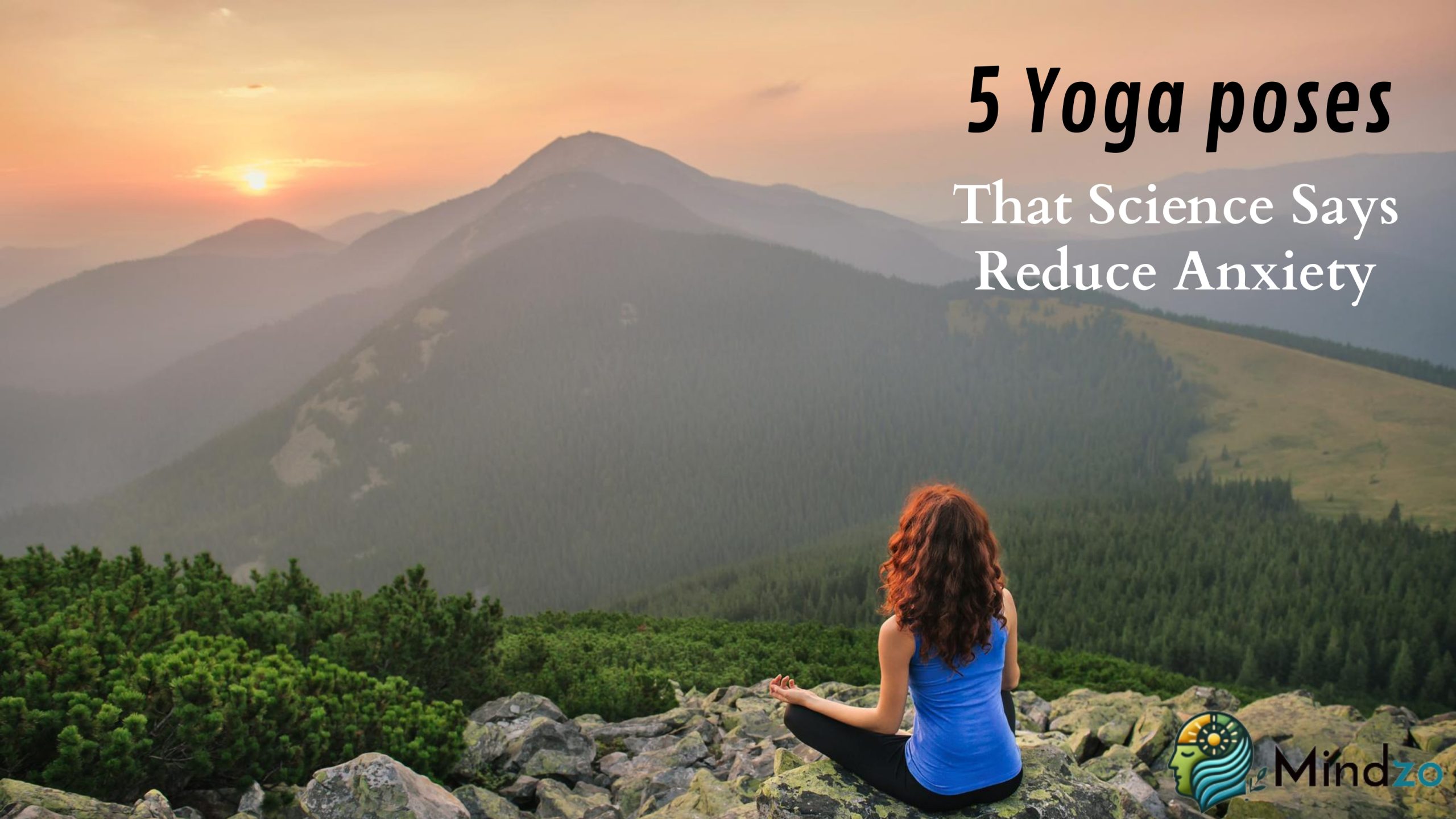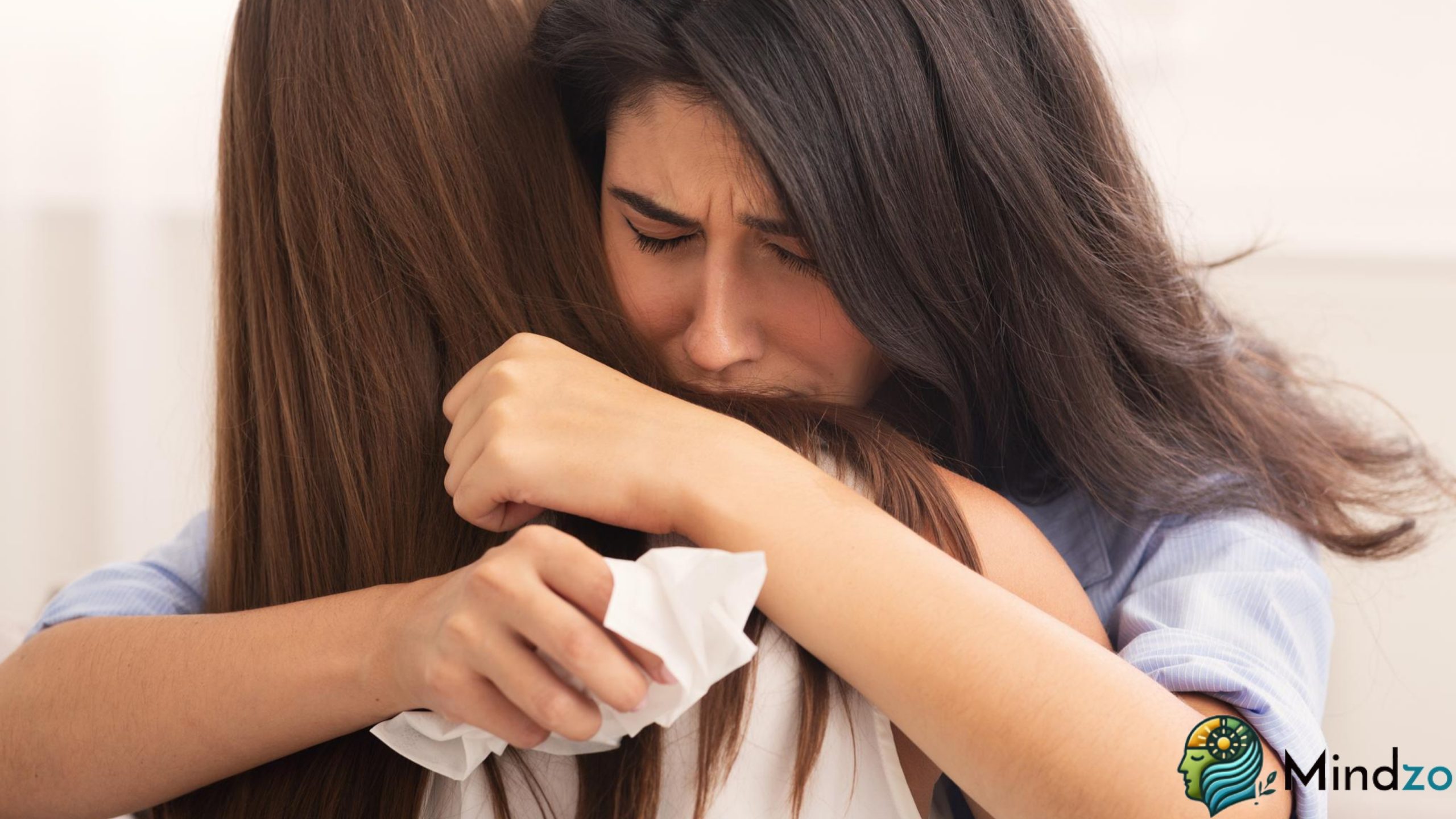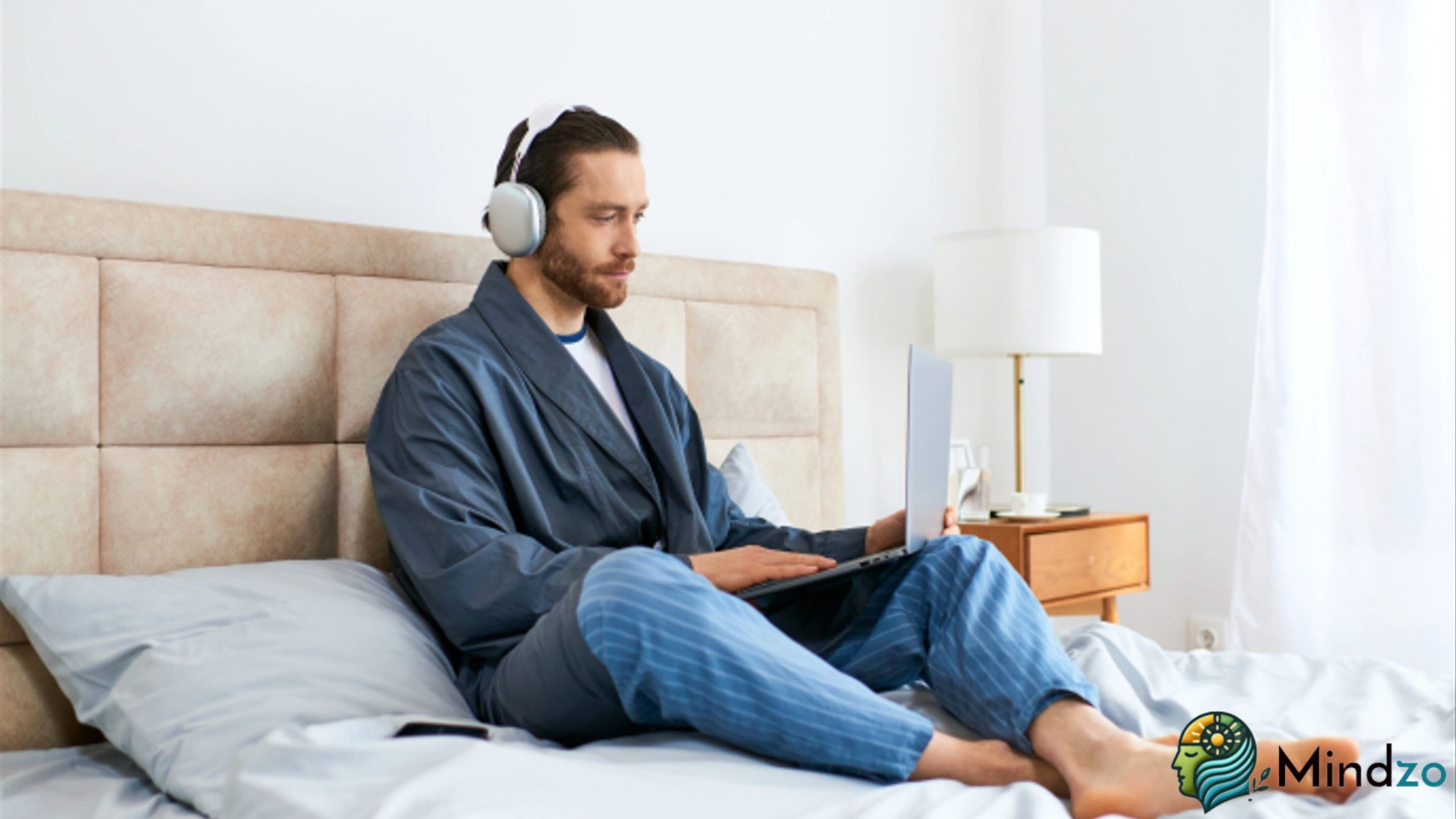5 Yoga Poses That Science Says Reduce Anxiety

Anxiety has become one of the most prevalent mental health challenges of our time, affecting millions of people worldwide. While various treatment options exist, from medication to therapy, an ancient practice from India has gained significant scientific validation for its anxiety-reducing benefits: yoga. What began over 5,000 years ago as a spiritual discipline in ancient India has now evolved into a scientifically-backed method for managing stress and anxiety.
Recent clinical research has provided compelling evidence that specific yoga poses can measurably reduce anxiety symptoms and improve overall mental well-being. Unlike quick fixes or temporary solutions, yoga offers a sustainable approach to anxiety management by addressing both the physical and mental aspects of stress response.
The Science Behind Yoga and Anxiety Relief
Before exploring specific poses, it’s essential to understand how yoga affects the nervous system and reduces anxiety from a physiological perspective. Multiple randomized controlled trials have demonstrated yoga’s effectiveness in treating anxiety disorders, with some studies showing results comparable to established treatments like cognitive behavioral therapy.
A landmark study published in JAMA Psychiatry involving 226 adults with generalized anxiety disorder found that 12 weeks of Kundalini yoga significantly reduced anxiety symptoms compared to stress education control groups. The research revealed that 54% of participants who practiced yoga met the criteria for meaningful symptom improvement, compared to only 33% in the control group.
The mechanisms behind yoga’s anxiety-reducing effects are multifaceted. Research shows that regular yoga practice decreases cortisol levels, the primary stress hormone that contributes to anxiety. Additionally, yoga activates the parasympathetic nervous system, which promotes relaxation and counteracts the fight-or-flight response commonly triggered in anxious individuals.
Neuroimaging studies have revealed that yoga practice increases GABA (Gamma-Aminobutyric Acid) levels in the brain, the same neurotransmitter targeted by anti-anxiety medications. This natural boost in GABA helps calm neural activity and reduces the racing thoughts characteristic of anxiety disorders.
Pose 1: Child’s Pose (Balasana)
Child’s Pose consistently appears in research as one of the most effective yoga positions for immediate anxiety relief. This foundational pose creates a sense of safety and introspection while activating the parasympathetic nervous system.
The Science:
Studies examining Child’s Pose specifically note its ability to rapidly decrease heart rate and lower blood pressure. The forward-folding position triggers the mammalian dive reflex, which naturally slows the heart rate and promotes calm. Research indicates that even 3-5 minutes in this pose can measurably reduce stress hormone levels.
How to Practice:
Begin on hands and knees, then sit back on your heels while extending your arms forward on the ground. Rest your forehead on the mat, allowing your spine to round naturally. Focus on deepening your breath, as the pose naturally encourages diaphragmatic breathing, which research shows is crucial for anxiety reduction.
Why It Works:
The pose’s fetal-like position triggers psychological feelings of safety while the forward fold compresses the torso, creating natural pressure that can feel comforting to anxious individuals. Clinical observations show that patients often report immediate relief from racing thoughts when practicing this pose.
Pose 2: Standing Forward Fold (Uttanasana)
Standing Forward Fold has demonstrated significant effectiveness in multiple anxiety studies due to its unique combination of inversion benefits and gravitational assistance. This pose leverages gravity to help release tension in areas where anxiety commonly manifests physically.
The Science:
Research has shown that forward folds increase blood flow to the prefrontal cortex, the brain region responsible for emotional regulation. A 2024 study found that participants practicing forward folds for just 10 minutes daily showed measurable improvements in anxiety scores after two weeks.
The pose also helps reset the nervous system by changing blood flow patterns. When you fold forward, blood rushes to the head, and when you rise, the change in circulation triggers a relaxation response that can interrupt anxiety spirals.
How to Practice:
Stand with feet hip-width apart, then slowly fold forward from the hips, letting your arms hang toward the ground. Maintain a gentle bend in your knees to reduce strain on your lower back. Allow the weight of your head and arms to create a natural stretch through your spine and neck.
Evidence-Based Benefits:
Studies tracking participants using forward folds report significant reductions in muscle tension, particularly in the neck and shoulders where anxiety-related tension commonly accumulates. Participants also showed improved heart rate variability, indicating better stress resilience.
Pose 3: Legs-Up-The-Wall Pose (Viparita Karani)
Legs-Up-The-Wall Pose has gained attention in clinical research for its profound impact on the nervous system. This restorative inversion requires minimal effort while providing maximum anxiety-relief benefits, making it ideal for individuals experiencing high stress levels.
The Science:
Multiple studies have documented this pose’s ability to activate the parasympathetic nervous system more effectively than most other yoga positions. Research published in 2023 found that participants practicing this pose for 15 minutes showed decreased cortisol levels and improved anxiety scores immediately following the session.
The pose works by shifting blood flow away from the extremities and toward the core organs. This redistribution triggers the baroreceptor reflex, which signals the brain to lower heart rate and blood pressure, creating a natural relaxation response.
How to Practice:
Lie on your back near a wall, extending your legs up against the wall surface. Your body should form an L-shape, with arms relaxed at your sides. Focus on slow, steady breathing while allowing gravity to facilitate venous return and lymphatic drainage.
Clinical Observations:
Healthcare providers report that patients with panic disorder often find this pose particularly effective, as it provides anxiety relief without requiring physical exertion that might trigger symptoms. The pose’s passive nature makes it accessible even during acute anxiety episodes.
Pose 4: Cat-Cow Stretch (Marjaryasana-Bitilasana)
The Cat-Cow sequence has demonstrated effectiveness in anxiety treatment through its unique combination of spinal movement and breath coordination. Research shows this dynamic pose sequence helps break the physical patterns associated with chronic anxiety.
The Science:
Studies focusing on movement-based anxiety interventions have found that spinal flexion and extension patterns help regulate the autonomic nervous system. The Cat-Cow sequence specifically targets the vagus nerve, which plays a crucial role in the body’s relaxation response.
A 2022 clinical trial found that participants practicing Cat-Cow sequences for 8 weeks showed significant improvements in anxiety scores and reported better emotional regulation. The rhythmic movement combined with coordinated breathing creates a meditative effect that interrupts anxious thought patterns.
How to Practice:
Start on hands and knees in a tabletop position. Inhale while arching your back and lifting your head (Cow), then exhale while rounding your spine and tucking your chin (Cat). Synchronize the movements with your breath, creating a flowing rhythm.
Therapeutic Mechanisms:
The alternating spinal movements help release physical tension while the breath coordination engages the prefrontal cortex. This dual action addresses both the physical and cognitive aspects of anxiety, making it particularly effective for generalized anxiety disorder.
Pose 5: Corpse Pose (Savasana)
While appearing simple, Corpse Pose has shown remarkable effectiveness in clinical trials for anxiety reduction. Research indicates this pose’s power lies not in physical movement but in its ability to trigger deep relaxation responses.
The Science:
Savasana has been extensively studied in anxiety research, with multiple trials showing significant reductions in both state and trait anxiety. A comprehensive study of 60 participants found that regular Savasana practice led to measurable decreases in anxiety levels and improvements in overall quality of life after just 30 days.
The pose works by allowing the nervous system to shift from sympathetic (stress) to parasympathetic (relaxation) dominance. Brain imaging studies show increased activity in regions associated with emotional regulation during Savasana practice.
How to Practice:
Lie flat on your back with legs slightly apart and arms at your sides, palms facing up. Close your eyes and systematically relax each part of your body, starting from your toes and moving upward. Focus on releasing physical tension while maintaining awareness of your breath.
Research Findings:
Clinical studies have documented significant improvements in sleep quality, emotional regulation, and stress resilience among regular Savasana practitioners. Participants report feeling more equipped to handle daily stressors and experience fewer anxiety episodes.
Progressive Relaxation Benefits:
The pose’s effectiveness increases when combined with progressive muscle relaxation techniques. Research shows that participants using guided body scans during Savasana experience greater anxiety reduction than those practicing in silence.
Integrating These Poses into Daily Life
Research emphasizes that consistency, rather than duration, is key to yoga’s anxiety-reducing benefits. Studies show that practicing these five poses for just 10-15 minutes daily can provide significant anxiety relief within 2-4 weeks of regular practice.
Creating an Evidence-Based Routine:
Clinical recommendations suggest starting with 2-3 poses per session and gradually building to include all five. This approach prevents overwhelm while allowing the nervous system to adapt to the relaxation response.
Morning practice of these poses can help set a calmer tone for the day, while evening sessions can improve sleep quality and process daily stress. Research indicates that timing matters less than consistency for long-term anxiety management.
Breathing Integration:
Studies consistently show that combining these poses with controlled breathing amplifies their anxiety-reducing effects. The 4-7-8 breathing pattern (inhale for 4, hold for 7, exhale for 8) has shown particular effectiveness when practiced during these poses.
Long-Term Benefits and Considerations
Longitudinal studies tracking yoga practitioners over 6-12 months reveal sustained improvements in anxiety management and overall mental health. Unlike some interventions that show diminishing returns, yoga’s benefits often increase with consistent practice.
Research indicates that individuals who practice these specific poses regularly develop better emotional regulation skills and increased resilience to stress. The combination of physical postures, breath work, and mindful awareness creates lasting changes in how the nervous system responds to stressors.
Safety and Accessibility:
These five poses are considered safe for most individuals and can be modified for different physical abilities. However, those with severe anxiety disorders should consult healthcare providers before beginning any new wellness routine.
In short
The scientific evidence supporting yoga’s effectiveness for anxiety relief continues to grow, with these five poses consistently showing measurable benefits in clinical trials. From ancient Indian ashrams to modern research laboratories, the path from traditional practice to evidence-based treatment demonstrates yoga’s enduring relevance in mental health care.
What makes these poses particularly powerful is their accessibility and immediate effectiveness. Unlike complex interventions requiring extensive training, these evidence-backed positions can provide anxiety relief from the very first practice session while building long-term resilience with consistent use.
The journey from anxiety to calm doesn’t require complicated techniques or expensive treatments. Sometimes, the most profound healing comes from the simplest practices, backed by thousands of years of wisdom and validated by modern science.
Resources :
- https://pmc.ncbi.nlm.nih.gov/articles/PMC5843960/
- https://www.health.harvard.edu/staying-healthy/yoga-for-better-mental-health
- https://www.nm.org/healthbeat/healthy-tips/fitness/science-based-benefits-behind-yoga
- https://www.healthline.com/health/anxiety/yoga-for-anxiety
- https://psychcentral.com/anxiety/yoga-for-anxiety
- https://www.sciencedirect.com/science/article/pii/S0001691823002512
-
 Beyond Words: The Emotional Medicine of a Simple HugOctober 27, 2025
Beyond Words: The Emotional Medicine of a Simple HugOctober 27, 2025 -
 Music’s Unique Therapeutic BenefitsOctober 23, 2025
Music’s Unique Therapeutic BenefitsOctober 23, 2025

Leave a Reply